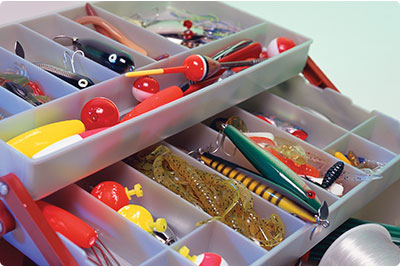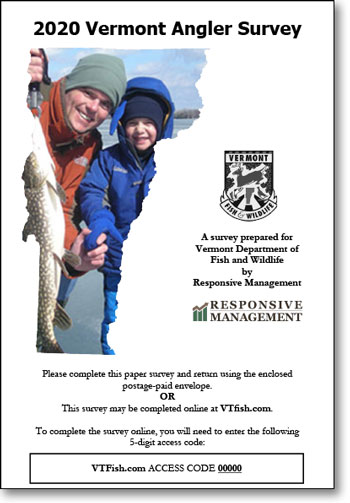 What is the Angler Survey?
What is the Angler Survey?
2020 marked the 4th survey throughout the last 30 years conducted by the Vermont Fish & Wildlife Department. This survey asked a random group of both resident and-nonresident anglers several questions related to their experiences and opinions about fishing in Vermont. These surveys provide valuable insight used by fisheries managers to inform decisions and track trends throughout the last three decades.
What did we learn?
Ice Fishing Insights
Lesser Known Sportfish
Salmonid Management
Survey Highlights at a Glance
- The rate of fishing participation in 2019 was 84.7% among resident license buyers and 96.5% among nonresident license buyers.
- Nearly 72,000 resident anglers are estimated to have fished for almost 1.8 million days in 2019.
- Almost 37,000 nonresident anglers fished for approximately 369,000 days.
 66.3% of resident and 38.5% of nonresident anglers fished for brook, brown, or rainbow trout in streams or rivers.
66.3% of resident and 38.5% of nonresident anglers fished for brook, brown, or rainbow trout in streams or rivers.
- 71.9% of resident anglers and 52.1% of nonresident anglers fished for warmwater fish species.
- 47.9% of resident anglers and 33.8% of nonresident anglers fished for trout or salmon in ponds or lakes in Vermont.
- Brook trout, largemouth bass, and smallmouth bass were the three most preferred species when fishing in open water.
- Yellow perch, northern pike, and lake trout were the three most preferred species when fishing through the ice.
- Anglers spent more time fishing for brook, brown, and rainbow trout than for any other species group.
- A majority of anglers rated the quality of fishing in Vermont as good or excellent and ratings of overall fishing quality were better, compared to ratings in 2009.
- Stocking programs continue to be important to most anglers.
- Crowding at access areas and overall access to fishing was not seen as a significant problem in Vermont.
- 84% of anglers got their information about fishing directly from the Vermont Fish & Wildlife Department.
See also:
- 2010 VT Angler Survey | PDF
- 2000 VT Angler Survey | PDF
- 1991 VT Angler Survey | PDF
